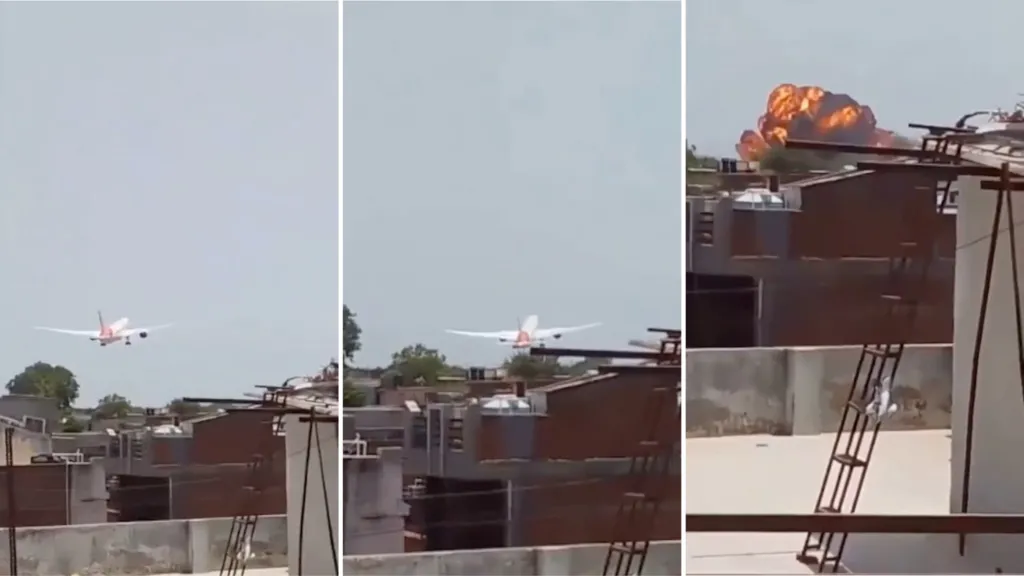In a digital age where moments can go viral within seconds, one teenager’s spontaneous act of filming became the lens through which the world witnessed unimaginable tragedy. The Air India crash video, captured by a teenage bystander, spread rapidly across social media, bringing raw visuals of the disaster into living rooms around the globe. But behind the viral footage lies a story of shock, responsibility, and an emotional journey few could imagine.
What Happened in the Air India Crash
The incident occurred during a routine flight operated by Air India, bound for Kerala, India. As the plane approached the runway amid challenging weather conditions, it overshot the landing strip and broke into pieces upon impact. The crash resulted in numerous injuries and multiple fatalities, with rescue teams rushing to the scene to aid survivors trapped inside the wreckage.
Among those nearby was a teenage witness who instinctively began filming the unfolding chaos. The result was a video that would soon be recognized worldwide as the Air India crash video—a firsthand account that brought the horror of the moment into sharp focus.
The Teen Behind the Lens
The teen, whose identity remains confidential for privacy and safety reasons, had been near the airport with friends when the plane descended. Hearing the roar and subsequent crash, they pulled out their phone and began recording. The video captured thick smoke, twisted metal, and the desperate cries of injured passengers—all within moments of the disaster.
Though the teen never expected the footage to go viral, it became the first unfiltered look at the crash, shared initially among local groups before exploding onto global platforms like Twitter, YouTube, and major news outlets.
How the Air India Crash Video Went Viral
Within hours of being posted, the Air India crash video had amassed millions of views. News organizations began referencing it in breaking reports, and hashtags linked to the crash began trending globally. The footage was raw and emotional, showing responders pulling victims from the wreckage, survivors staggering in confusion, and the scale of destruction.
Social media reacted with a mix of horror, sympathy, and gratitude. While some praised the teen for capturing history as it happened, others raised concerns about trauma, consent, and the ethics of sharing such graphic content.
The Ethical Debate Around the Video
The widespread sharing of the Air India crash video ignited a debate among journalists, ethicists, and the public. Was it right to broadcast such disturbing footage? Should a teenager bear the responsibility of documenting a national tragedy?
Critics argued that sharing such content could re-traumatize survivors and families of victims. However, others pointed out the importance of citizen journalism in holding institutions accountable and providing transparent insight into disaster responses.
The teen’s family eventually released a statement asking for privacy and expressing shock at the video’s reach. Mental health professionals have since urged support for young witnesses in similar situations, emphasizing that unexpected exposure to traumatic events—and the spotlight—can have lasting emotional consequences.
The Power and Impact of the Video
Despite the controversy, the Air India crash video served a powerful role in raising awareness. It humanized the disaster in a way that official reports could not. Through a shaky lens, viewers saw not just wreckage but the raw human toll—a moment of chaos, fear, and courage.
The footage was later used by investigators and safety analysts to reconstruct the incident and evaluate emergency response times. In this way, the teen’s video may contribute to future improvements in aviation safety protocols.
A Lesson in the Era of Smartphones
This incident highlights the increasing role of everyday citizens in journalism. With smartphones now more powerful than ever, anyone can document history in real-time. The Air India crash video is a poignant reminder that what begins as an instinctive recording can have global implications.
But it also raises the need for digital responsibility. As more people—especially young ones—capture and share crisis events, education around ethics, trauma, and respectful sharing becomes more important than ever.
Conclusion
The Air India crash video, captured by a teenage witness, became more than just viral footage—it became a defining document of a national tragedy. It showed the world the human side of the headlines and underscored the unpredictable power of citizen journalism. As debates around its ethics continue, one truth remains: that single act of filming ensured the world didn’t look away—and may have set the stage for future change in how disasters are understood, reported, and prevented.
Don’t Miss Out! Get the Latest News, Tips, and Updates from Us!
